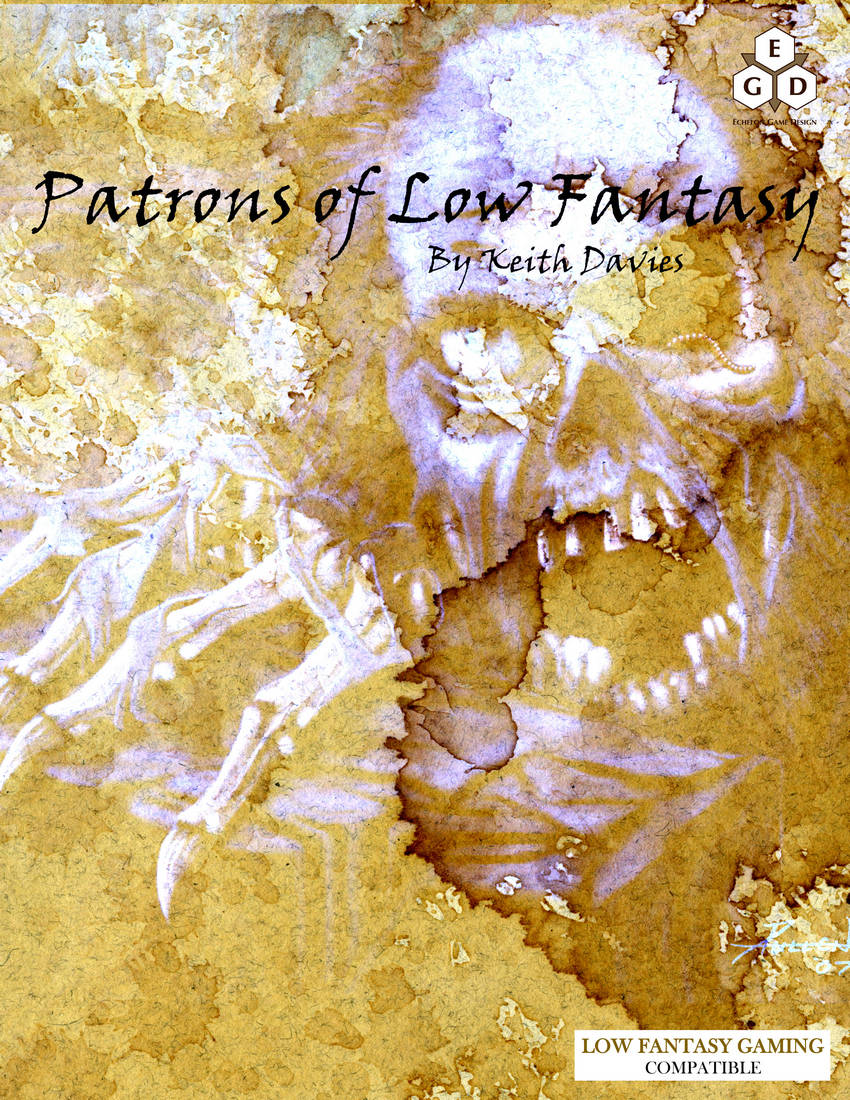Nothing for nothing, of course… so just how do you gain a patron’s favor?
The short answer is “help advance the patron’s goals”.
This is grand adventure fodder. The patron has goals and objectives, and needs agents to help achieve them. If you want to curry favor with a patron, accept and successfully complete missions for them.
Each time a character completes a mission for a patron, the character’s maximum favor with that patron increases by one, to a maximum of 12. The scope and complexity of the mission should grow with the maximum favor (if you want more from a patron, you must do more) and the character’s level (the more capable the character, the more the patron will ask). A low-level, high-favor mission might have many steps, each achievable by a low-level character, while a high-level, low-favor mission might have only a single, very challenging step.
The missions are to advance the patron’s goals. It might be easy to see how they do… but they don’t need to, they can be pretty opaque. This makes them lovely candidates for random tables.
Some of these are likely to need interpretation (‘acquiring’ a person might mean allying with or gaining for your side; ‘steal’ would be kidnapping), but here’s a first cut.
| Roll | Mission | Target |
| 1 | Acquire | Event |
| 2 | Create | Information |
| 3 | Destroy | Location |
| 4 | Explore | Organization |
| 5 | Infiltrate | Person |
| 6 | Protect | Thing |
| 7 | Steal | |
| 8 | Transport |
The missions are generic, covering most things a patron might want done to a target.
Acquire here means to gain for the patron. This might mean taking over an event, buying a location, allying with an organization or person, or buying a thing. This is generally fairly neutral, “this is mine now and you’re okay with that” acquisition.
Create here means to cause something to exist. Scheduling and organizing (or causing someone else to) an event, building a fortress, founding and developing an organization, promoting a person (be the one behind the throne), or simply hammering steel into a sword all could be examples.
Destroy should be clear, causing the target to be no more. Kill a person, cause an organization to disband, burn down a house, shatter the priceless gem in the queen’s crown. The primary purpose is to cause the thing to no longer exist, either for its own sake or to deny it to someone else.
Explore is to learn about the target: study it, go in and look around, talk with at length to learn their innermost desires… whatever it takes.
Infiltrate is to insinuate oneself into the target… gain the target’s trust or be present without discovery. The idea here to subtly gain unnoticeable access to the target.
Protect is another that should be obvious: prevent harm from coming to the target. This might mean acting as a bodyguard or rescuing the target, among other things.
Steal is much like acquire, but the emphasis is as much on denying it to the current owner as it is to come away with the target (destroy is often a backup plan, if theft is not possible). Kidnapping a person, subverting an organization away from its original goals to serve the patron, and so on.
Transport is simply to move the target from one place to another, often in the face of opposition.
Targets are a more subject to interpretation.
An Event is a time-bound situation such as a coronation or other ceremony, a grand parade, or the like… but fulfillment of a prophecy can count also.
Information is intangible knowledge, but often will be committed to a physical artifact (the idea is intangible, but it’s written down right here). You can acquire it (learn from someone), create it (research and discover it), destroy it (burn all the books and kill everyone who knows), and so on. It seems like it would be difficult to infiltrate, but ‘infiltrating information’ could mean subtly changing it so it means something else, or inserting information (true or false) where someone could find it.
Location is a place, and seems pretty straightforward. You can buy a house, burn it down, etc.
Organization means a collection of people (or other creatures) with similar nature and treated as a group: a nation, a guild, a religion, and so on.
Person might mean a specific person (the king!) or a person of a particular type (‘steal a child’, literal kidnapping). It might also mean more than one person: people with a similar nature that aren’t particularly grouped. “Kill all wizards!” would target “person”, “kill the wizards of the Red Guild” would target “organization”.
Thing is basically any tangible (or perhaps intangible, who is to say) object that is not one of the above, and includes “non-person creatures”. Verimentherax the Great Wyrm is probably a person, “a swamp dragon” is probably a “thing”, by this metric.
To devise a mission, roll d8 and d6, look up the two values, and plan around that. The terms are fairly generic because they need to cover a broad range of possibilities.
Missions can be inverted. Some are already built in — “Protect Object” could be the opposite of “Destroy Object” or “Steal Object” — but a mission could also be to “Prevent Create Object” or “Prevent Transport Object”.
Closing Comments
To gain the favor of a patron, you have to do something the patron wants done. As you gain more favor, and thus more from the patron, the patron will look to you to do more. Similarly, as you become more capable, the patron will expect you to take on more challenging missions.
The mission table is pretty generic because it needs to align with the goals and objectives of a broad range of patrons. I considered creating tables expanding on the targets, but I think the specific targets should probably come out of other campaign events. Patron missions are a wonderful way to tie together entities that might not otherwise be obviously linked.


Good luck with the rest of the challenge! I linked some folks over here today from my blog. Enjoying your work, keep it up!
Thanks froth! I hope you’re enjoying the series so far. I’ve been stumbling a bit, mostly because I work long hours and don’t have much time to write during the week — I catch up on weekends. I’ve got a couple weeks off coming up real soon, though, and aim to wrap up not just the series, but get it organized, polished, and packaged into a PDF at OBS.
I’m not really a gamer so a fair bit of this went over my head lol. I think I kind of get it though
Debbie